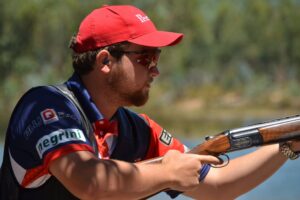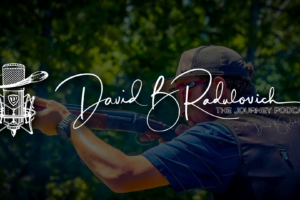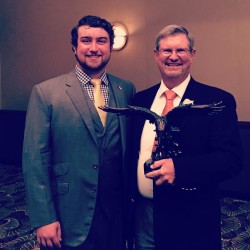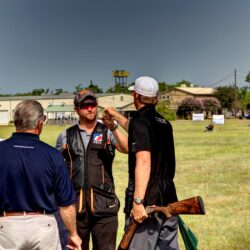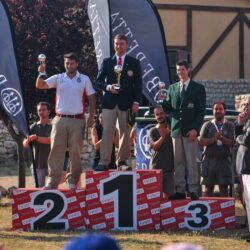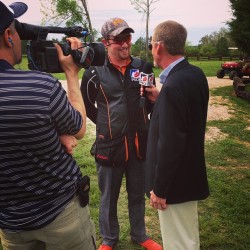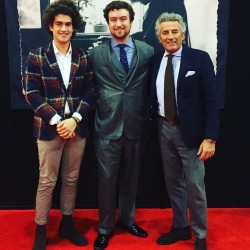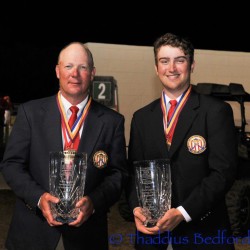This article was written in 2016, and while it does reflect the stage of knowledge and mindset I was in at the time — my own personal self improvement as a competitor, coach, and student of the game itself has influenced a change in some of the views expressed here. I am leaving this article up on my website, as it still is immensely valuable.
This entry into the Shooting Journal is going to be a little different than the previous ones. I’m going to attempt to talk about a multitude of questions, as opposed to just one singular one.
The first thing I’m going to talk about is visualization. A lot of people are always talking about this and the influence that it has in sports and other things. A common misconception about visualization is that visualization is the only thing involved in the pre-shot routine — when in fact, it is actually only a very small part. A very important part, though. Visualization is something that takes many many years of practice to be able to do efficiently, I have been working on it since I was 14 years old and still I’m not where I would like to be with it. Visualization can be used between pairs, in between stations, before a round, after a round, at the end of a day of competing, before or after a tournament, and pretty much any other time that you could possibly think of. When I first started to use visualization for my shooting, I would attempt to visualize how I wanted my rounds to go. I would try to imagine shooting very well, staying calm, and overcoming obstacles in the middle of the course that would normally hurt my performance. I would also use it in between pairs to visualize each target as part of my pre-shot routine — but now I have gradually moved on to only really using visualization during a round, for a couple of reasons.
When you read about visualizing things they teach you to visualize something that you would like to happen, a sort of positive affirmation. For example, if I’m going into the National Championship next month, for lack of better details, I would visualize winning the whole tournament. Let’s sidetrack a little bit so I can bring something else up, that is, the difference between trying to win versus just letting it happen and winning. The minute that we start trying to win, or trying to perform well, we end up losing our presence. The problem with this is that all of a sudden we’ve gone from living in the moment to thinking about the future in the middle of a tournament round. This can hugely influence your performance in a very negative way — which I will talk about later. Going back to visualization now, trying to visualize a specific outcome of a match that I’m trying to make happen, in my opinion, influences the focus that I would like to have on the present process and redirects it towards the future product. That being said, I think going through visualization techniques like this have a very positive potential learning experience for somebody just starting out with it.
Now talking about the visualization that I use while I am inside the shooting station, I truly believe that the more detail oriented you can be, the more positively influential the work that you are putting into your pre-shot routine can be. When I am in the box, I want to visualize not only the things that I want to see — I want to visualize what I will hear, what I will feel, what I will think, and what I will do. As an example, I want to visualize the target, the direction it spins, the lines or dimples on the clay, the flight path, the reflection spots, absolutely everything about the target. I want to visualize how I am going to insert my gun, the connection that I’m going to make with the target (not at the lead), how the target and the gun will synchronize, the breakpoint, I want to see the target breaking, I want to feel the gun going off, I want to visualize my move to the second target, what it looks like, what it feels like. I want to visualize where I’m visually picking up the second target, the connection and synchronization on that target, the breakpoint, how the target breaks, what the gun feels like, what I will be thinking (nothing), how calm I am going to be — both mentally and physically. Even what it feels like to have 100% control over the directional movement of my gun, and overcoming what something like perceived pressure or anxiety will do to my body and influence the ability I have to control my gun. The whole point of visualization is to convert conscious thought into subconscious action, so the more lifelike your visualization can be, the more effective it will get. Doing something as simple as just tracing the lines of the targets with your eyes will do absolutely no good for you. You need to make it feel real, that is the only way for it to work. If you’re not attempting to do that, you’re just wasting time. This barely scratches the surface as to what all is going through my head between pairs — but it gives a good example of everything that I am thinking about. But notice that I said nothing about lead, because again that will take my presence away during the shot — I want to be fully focused on the target and not the potential result of the pair. If I am thinking about or looking at the lead, you can guarantee that I am not thinking about the target, but instead, I’m thinking about missing or hitting it.
Pretty much everything that I do during the time that I am competing revolves around the fact that I am trying to get myself to think and live solely in the present. I don’t want to think about how I have to perform, I don’t want to think how I did perform, I don’t want to think about what somebody else did. The only thing that matters, and the only thing that I have full 100% control over during the round, is how I perform on that course. If I am spending any mental energy on thinking about anything else, anybody else, any potential result or past performance, then I am wasting valuable time and setting myself back — both literally and figuratively.
It is important to note that after I visualize everything that I want to happened before each pair, I go through a process of mentally and physically calming myself down. Not because I don’t want to be worked up, but because the only way that I know I can truly finesse the movement of my gun in relation to the target is if I have absolutely zero physical tension, and absolutely zero mental anxiety or chatter. If you think about it, to perform at the top level in this game requires a difference of literally millimeters at the end of your barrel. The difference between the guy going home with the trophy and all the guys who aren’t going home with the trophy, is that the guy who won essentially had better control over his gun than everybody else. So if there is absolutely anything that I can do to maximize the level of control that I have over my connection with the target, I can guarantee you that I’m going to do it. It is very simple to think about, imagine trying to perform brain surgery after a massive adrenaline rush, it would basically be impossible. Now imagine trying to do the same thing in the absolute most calm mental and physical state that you can be in without losing any cognitive ability. The level of motor control skills that we have while physically and mentally relaxed is much higher than the opposite end of the spectrum.
This somewhat leads us into the next question, whether I amp up or try to quiet my mind while shooting. I think from reading the previous couple of paragraphs that it is fairly obvious as to what the answer to this question would be for me. Without a doubt, I’d much prefer a calmer mental state over one in which I am amped up — again, this is totally because of the way that it allows me to control my gun during the shot. It has taken me a very long time to get to the point where I can actually perform well like this. I’ve been working on doing it for about three years, and until this year it has been an inconsistent struggle — constantly wrestling with the problem of becoming too relaxed throughout a tournament round and not being able to compete at the highest level. It was almost like what I was doing was working too good, to the point where I almost wouldn’t care enough about how I was shooting. If you ever find yourself at that point, you most certainly have gone too far. There’s a very fine line between being mentally calm but still aggressive and competitive versus being mentally calm and lackadaisical, in my opinion the only way to learn how to deal with this is through practice and experimentation because you need some simulation of pressure to truly replicate the environment of a tournament.
There has never been a better example, to me, of how powerful this can be than the last few stations of the U.S. Open that I won this year at Caney Creek. Knowing that I was going into the last day of the tournament with a one target lead and having to shoot a course that was two targets less than some of the people below me somewhat put me on edge going into the round. What many people don’t know, is that Anne Cherry (Wendell’s wife) was in the hospital struggling with pancreatic and liver cancer during that event. Before the U.S. Open started I visited them in the hospital and told Wendell that I would rather stay there and miss the tournament — Anne made me promise to go to the U.S. Open, win it, and bring the trophy back for her. Driving to the club Sunday morning, I had talked to Wendell and told him that I was going to do it and finish strong for her — not knowing that she had passed about 30 minutes previously.
So put that on top of the pressure of leading the U.S. Open going into the last round and having a possible clean sweep of all the events at the Open for the first time ever, and you can bet that my mind was not in the present at the beginning of that round. My first few stations were pretty rough — I ran my first three stations but it was truly out of luck. I have never cracked so many targets in half before. On my fourth station I dropped an easy crossing belly bird, at which point, in my mind, I believed that if I dropped anything else I would have to shoot off for the title. It was at that time that I told myself, “You are going to feel anxious, you are going to feel the adrenaline, you are going to feel the nerves and hear your heartbeat. But regardless of how you feel, or what your body is doing, you still have control over your mind — and your mind is what controls your body. Do not let external circumstances influence the way that you move your gun. Make every shot perfect, you can do it. Block everything out.”
This was the first time that I truly believed in the separation between how we think and what we do. I have never felt more in control of my shooting before in my life. I proceeded to run the rest of the course, sometimes stopping between pairs for what felt like minutes until I believed that I could totally control my move. This is the difference between the person that wins and the person that doesn’t — and the difference is, the person on top has an understanding that he will feel pressure, that he will feel anxiety, that his mind will wander towards negative thoughts, but he has no doubt that he can control it, turn it around, and not let it influence his performance. There is no person, yet, that can do this 100% of the time. Not every performance will be like this, but the person that can do it the most, with the most consistency, will win more than anybody else.
You have to understand that during a round your mind is going to wander, it’s going to think about “what if I miss” or “what if I don’t do well” or “that target is way too hard” — but you have to be able to recognize that and understand that conscious thought is your own, you decide what you think about — even though sometimes you believe that your conscious thought process is uncontrollable and “just happens”, you have to understand what conscious thought actually is. Conscious thought is conscious thought. There is no such thing as a conscious subconscious thought stream, that does not exist in sport. As we know our conscious mind is something that we have full control over at all times, even when it comes to emotions such as fear, anger, and sadness — all of which influence our performance on the course in a negative way.
Changing the direction of this Journal entry a little bit, I want to answer the question of what the biggest difference between an average shooter and one of the best shooters in the world is. Aside from the obvious answer, which would be the millions of rounds of practice separating the two types of competitors, my answer would be that of a mindset. The people who have become very good at this sport haven’t done so by excusing misses or relying on some type of gadget or magic product to make them better. The people who truly become the greatest understand that the first answer to any question about a dissatisfactory performance is themselves, and they are always trying to understand what it is that they can do to become better. The effort that they put into their practice, into each individual target that they shoot, is equivalent to the cumulative effort put into a whole practice session by a normal competitor. If you have that mindset, you’ll eventually stumble upon most of everything else that will help you be better. Whether that be the type of stuff that I was talking about earlier in this Journal, which I have arrived at through my own curiosity and trials, or overcoming any other obstacle in your way.
If you’ve ever done any research on Michael Phelps, one of the greatest athletes in the history of sports, you will understand that one of the things that truly sets him apart is his personality. There is nothing that Michael is not willing to do in order to attain what he wants, it just so happens that what he wants is to be the greatest swimmer in history. I don’t really think that it is possible to become one of the greatest at anything other than what you’re truly passionate about — which in my mind, through simplification, means that that is the single thing that you need in order to be competing at a world level. You need to love it more than anything else, and be willing to sacrifice anything else that you have to get better. If you run that scenario through your head and decide that there is at least one thing that you would not give up in order to grow as a competitive shooter, then chances are you probably will never be at the top in the world — and that is not a bad thing, because it’s not what you truly value.
If you handpick the top five shooters in our game and talk to them about their lives they will eventually tell you that they gave up their job, or moved somewhere else, or completely changed their lives in order to be where they are now in this game. That is something that many people don’t really ever think about. I coach a lot of kids every summer that come through Champs’ Camp — I can’t tell you how many kids come to the camp saying that they want to be the best in the world. Literally out of every camp, there is probably about three or four kids who will say that, which is absolutely fantastic. But then if you were to ask them what their plan is to get there, they will answer something along the lines of, “I’m going to practice once a week” — and that’s great. But what are they going to practice? How are they going to practice? Only once a week?
A huge thing they are missing is the amount of detail required to get where they want to go — it’s important to have goals, but you need to have direction to get to those goals. You need to have a plan. Michael Phelps had a plan, his plan was so specific that it would even go down to the hundredths of a second that he would want to get to in his lap times during practice. In his whole teenage life, there were only two days that he did not practice — when he got his wisdom teeth out, and his senior prom. That is dedication, that is having a plan. And I’m not saying that if you want to be as good as George Digweed, you need to practice every single day for the rest of your life. What I am saying is that if you want to be as good as George Digweed, you need to understand what he did to get there, and then you need to go do that.
Being the best in the world at something has nothing to do with skill or talent. I tell all of my students that you only need enough talent to get there, the rest is just hard work. There is no way that the best 100 competitors in any sport are the most talented 100 competitors in that sport. Talent or skill just gets you to the point where you are good, hard work and dedication with the right direction gets you to where you are great, and the constant unwavering desire to improve gets you to the point where you are the best.
And with all of that I think I’ve answered all the questions that have been submitted, and I hope my philosophical rant hasn’t scared anybody off! This Shooting Journal entry is not very in depth due to the nature of it’s focus — answering a bunch of different questions. I plan on going more in depth with more complicated or more popular topics in the near future.
If you have any other questions about the things that I’ve discussed in this article, please let me know so that I can touch on them again in another upcoming Shooting Journal. Thank you!


